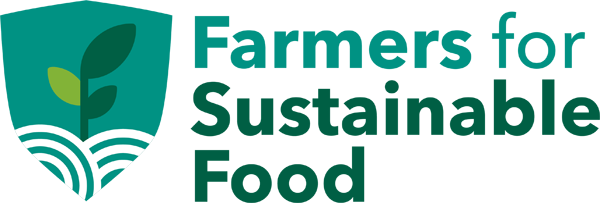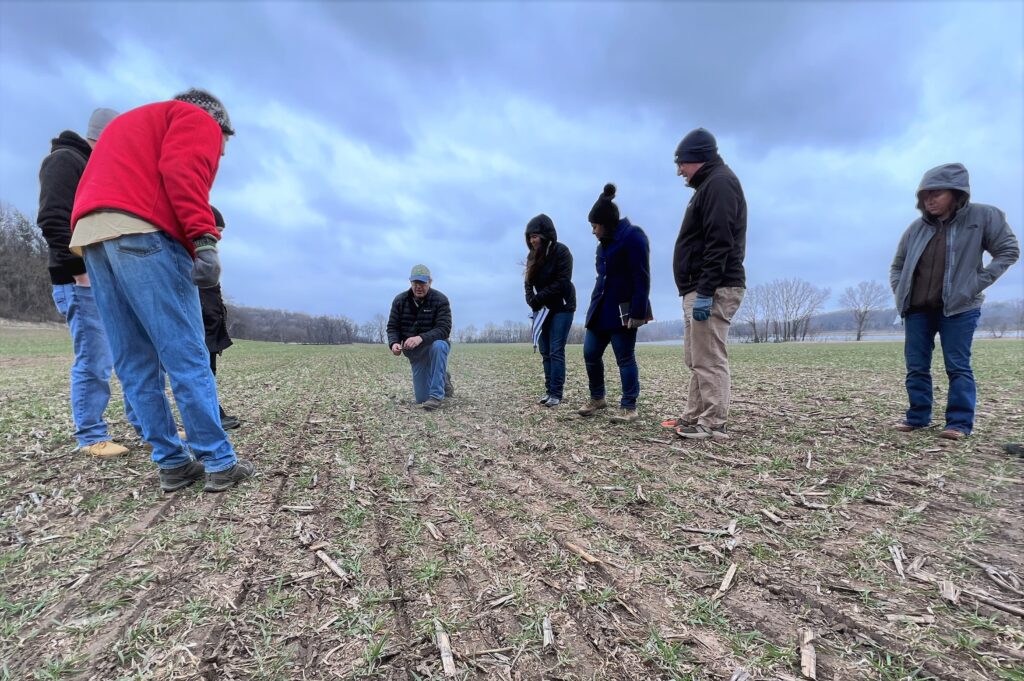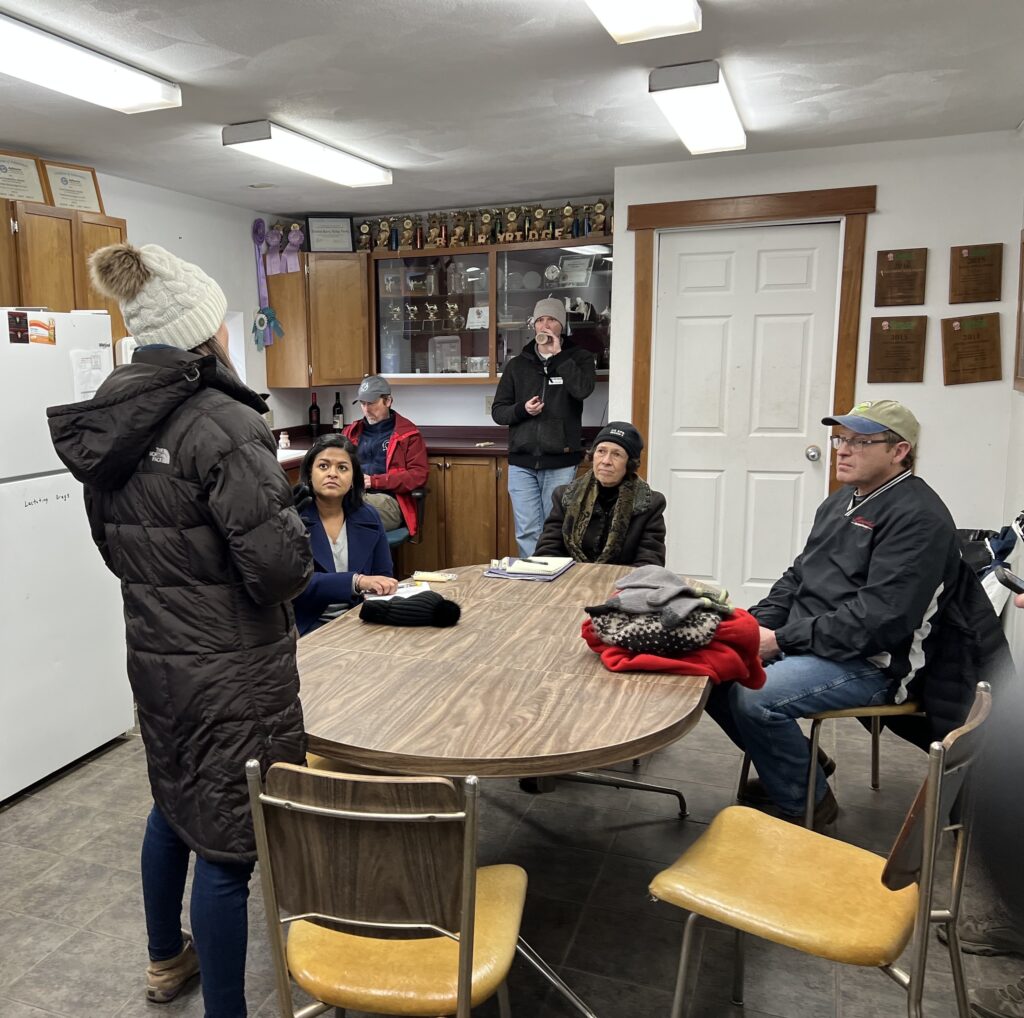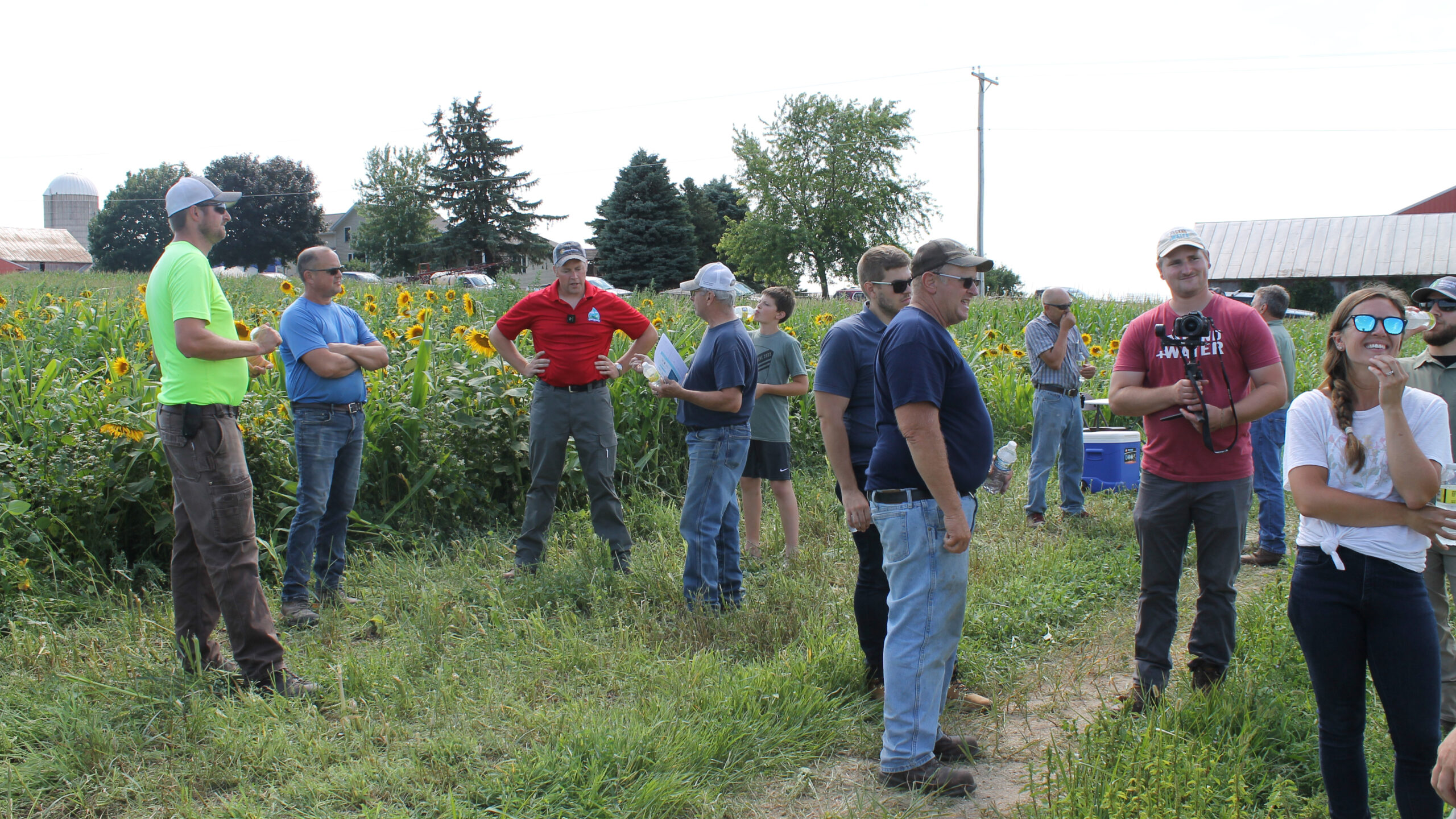
News

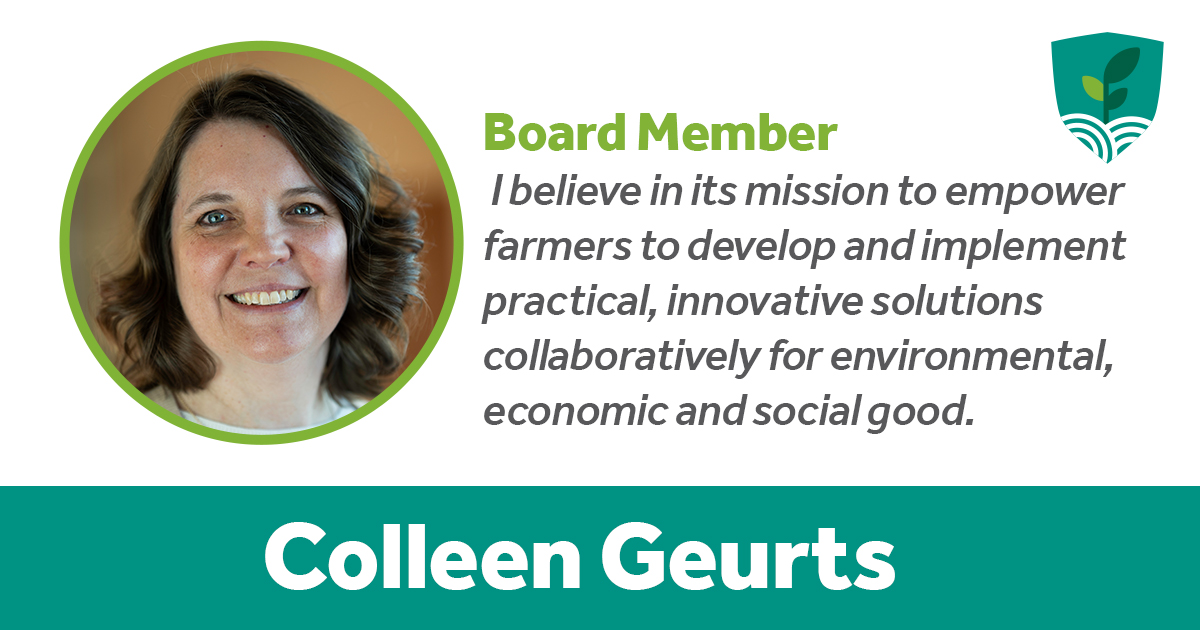
Colleen Geurts
Background: what do you do/how did you got involved with sustainability? Taking care of the environment is something I’ve always been passionate about. It started when I was a little girl. On fishing trips with my Dad, he always taught me to leave things better than when we found them and enjoy the natural beauty around us. Girl scouts was the same. On our camping and hiking trips we would always pack everything out that we took in as well as trash others had left behind. This passion led me to a career in environmental engineering and now sustainability.
Why did you want to be a part of FSF and serve on the board? I wanted to serve on the FSF board because I believe in its mission to empower farmers to develop and implement practical, innovative solutions collaboratively for environmental, economic and social good. I believe it is so important to play a part in helping farmer-led working groups be successful in their environmental practices while also making sure that farms are sustainable financially. It is so impressive to see all the work the farmer-led working groups we support are doing to reduce environmental impacts from their farms and I love that it’s all farmer-led.
Why should others join FSF? FSF is creating an important connection between farmers and food processors to share knowledge and implement best practices together. When I first joined the board, I thought I would be able to share what I have learned being in the dairy processing industry and working with our branded customers. What I didn’t know is how much I would also learn about the good farmers are already doing and want to do going forward. It’s a great opportunity to share knowledge and work together on a sustainable food system.
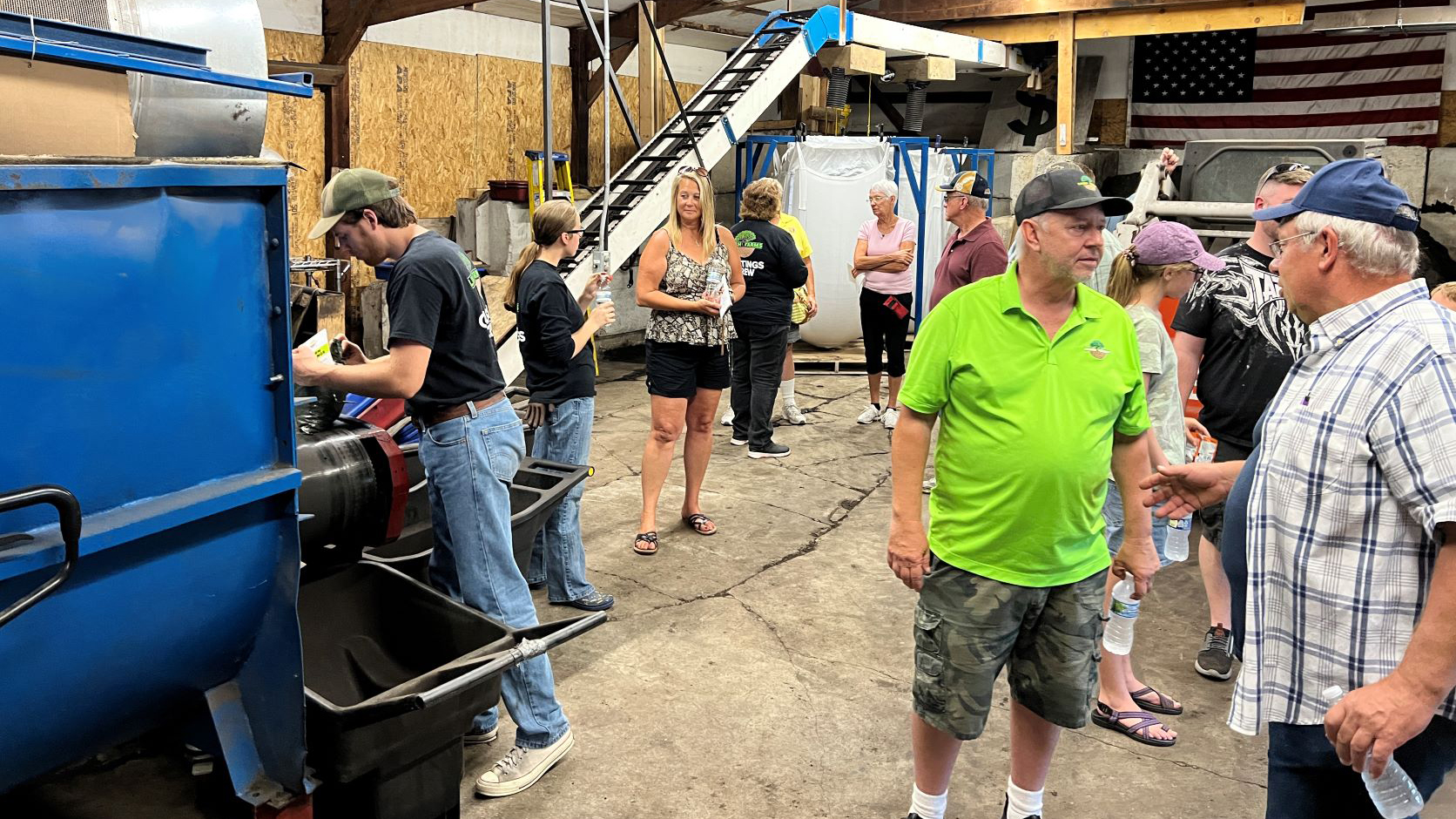
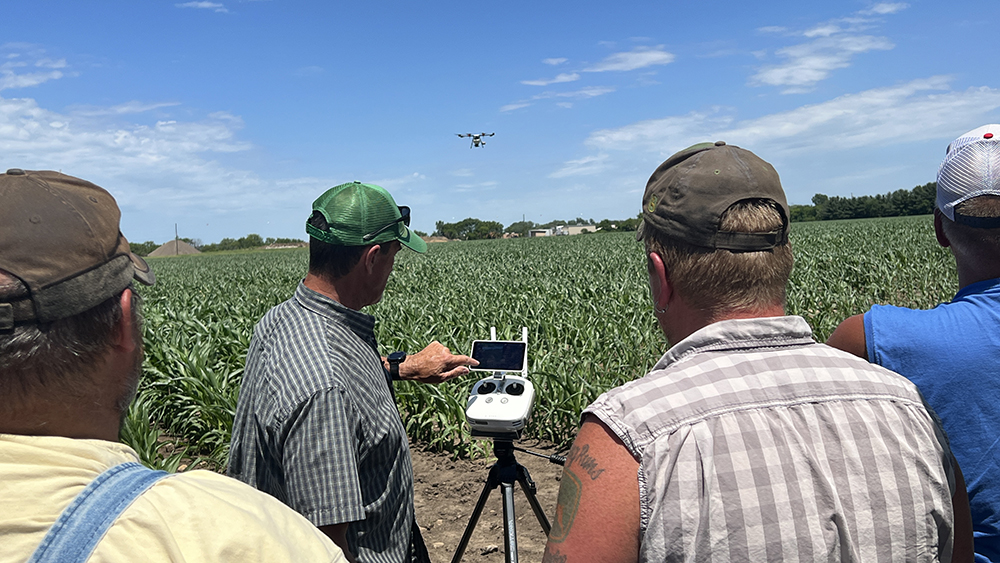
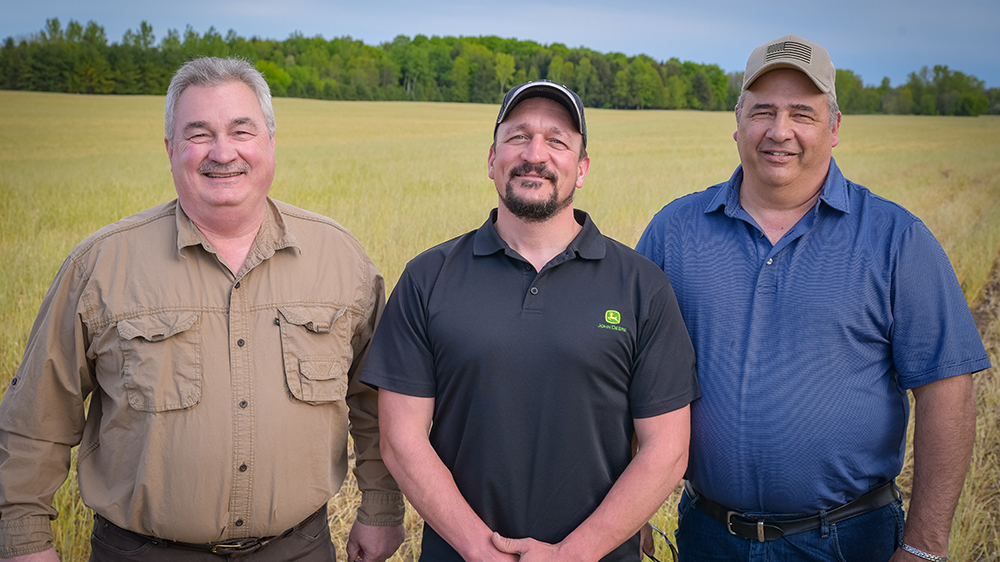
Wisconsin dairy earns national award with whole-farm approach to sustainability
Manure digester, cropping practices, animal care stand out at Deer Run Dairy
A Wisconsin dairy farm, Deer Run Dairy, has won national recognition for a comprehensive approach to sustainability.
The farm’s Outstanding Dairy Farm Sustainability award comes from the Innovation Center for U.S. Dairy as part of the center’s 11th annual U.S. Dairy Sustainability Awards.
Deer Run, owned by partners Duane and Derek Ducat (father and son) and Dale Bogart, milks about 1,650 cows with an additional 250 dry cows on site. The 2,500 acres of farmland is in an area with fractured bedrock and in some places very shallow soil, posing unique challenges to water quality.
“We really take a whole-farm approach to sustainability ― from our animals’ health, to being stewards of the land and using our manure digester to reduce pathogen levels,” Duane Ducat said. “We have a culture that’s developed at Deer Run to embrace the challenges that come with introducing new practices and methods that make it possible to be sustainable for the future.”
The sustainability awards, announced last month, recognize dairy farms, businesses and collaborative partnerships for practices that demonstrate outstanding economic, environmental and social benefits; a longstanding commitment to continuous improvement; and a replicable model to inform and inspire others in advancing dairy sustainability leadership.
“Deer Run is always willing to step up and take on new challenges by accelerating the adoption of practices that lead to continuous improvement in conservation,” said Tim Trotter, CEO of Edge Dairy Farmer Cooperative, who nominated the farm. “This farm takes great pride in the commitment they’ve made to be a leading advocate for sustainability in the dairy community, and we could not be prouder to be associated with such an extraordinary representative.”
Learning and adapting are ongoing processes at Deer Run. The farm is part of the Door-Kewaunee Watershed Demonstration Farms Network with guidance from the USDA’s Natural Resources Conservation Service. Duane Ducat is also a founding member of Peninsula Pride Farms (PPF), a farmer-led conservation group whose members work together to protect the local watershed and encourage other farmers to try conservation practices such as cover crops, buffer strips and no-tillage.
Through PPF and the network, Deer Run hosts field days to show practices in action and share the benefits. Among the many people who have toured the farm to see the conservation up close is Wisconsin Gov. Tony Evers.
The farm’s sustainability efforts are wide-ranging.
“We are very deliberate with our manure applications to the land as well as our cropping practices,” Duane Ducat said. “We are planting cover crops in the late summer and fall, as well as no-till planting green into these cover crops in the spring to help protect and enhance soil health.”
With the use of an anaerobic digester, Deer Run is reducing pathogens in manure by a thousandfold, leaving just one-tenth of 1% of the pathogens found in untreated manure. In 2020, the digester was converted to produce renewable natural gas, a clean, low-carbon fuel for the transportation market. Byproducts from the digester include animal bedding and nutrient-rich fertilizer that can be either used by the farm for cost savings or sold for profit.
In 2021, a partner company began the engineering process to expand the digester system’s capacity and impact by installing a mixing tank that will enable other local farms to bring animal waste to Deer Run.
The farm also focuses on cow comfort and energy efficiency. Antibiotic use is minimal, and feeding trials are being conducted to reduce methane gas production in the rumen of the cows. The barns are cross-ventilated by fans that conserve energy while keeping the animals cool.
“All of these practices help paint a complete sustainability picture at Deer Run,” Duane Ducat said.
The advancements at Deer Run Dairy to constantly improve cow care and the health of the soil and water are championed in Wisconsin. There are more than 40 farmer-driven watershed protection groups in the state, all striving to improve the land and water for future generations.
“Consumers continue to look for and make purchase decisions based on sustainable messaging on labels,” said Patrick Geoghegan, executive vice president of industry relations for Dairy Farmers of Wisconsin. “Deer Run Dairy, and many other Wisconsin dairy farms, have great stories to share about how they care for their cows, their community and the environment. Awards such as this affirm the efforts of the state’s dairy farmers but also our rich heritage in conservation efforts.”
Judges in the Innovation Center awards program evaluated dozens of nominations based on economic, environmental and community impact. The independent panel — including experts working with and throughout the dairy community — also considered learning, innovation, scalability and replicability.
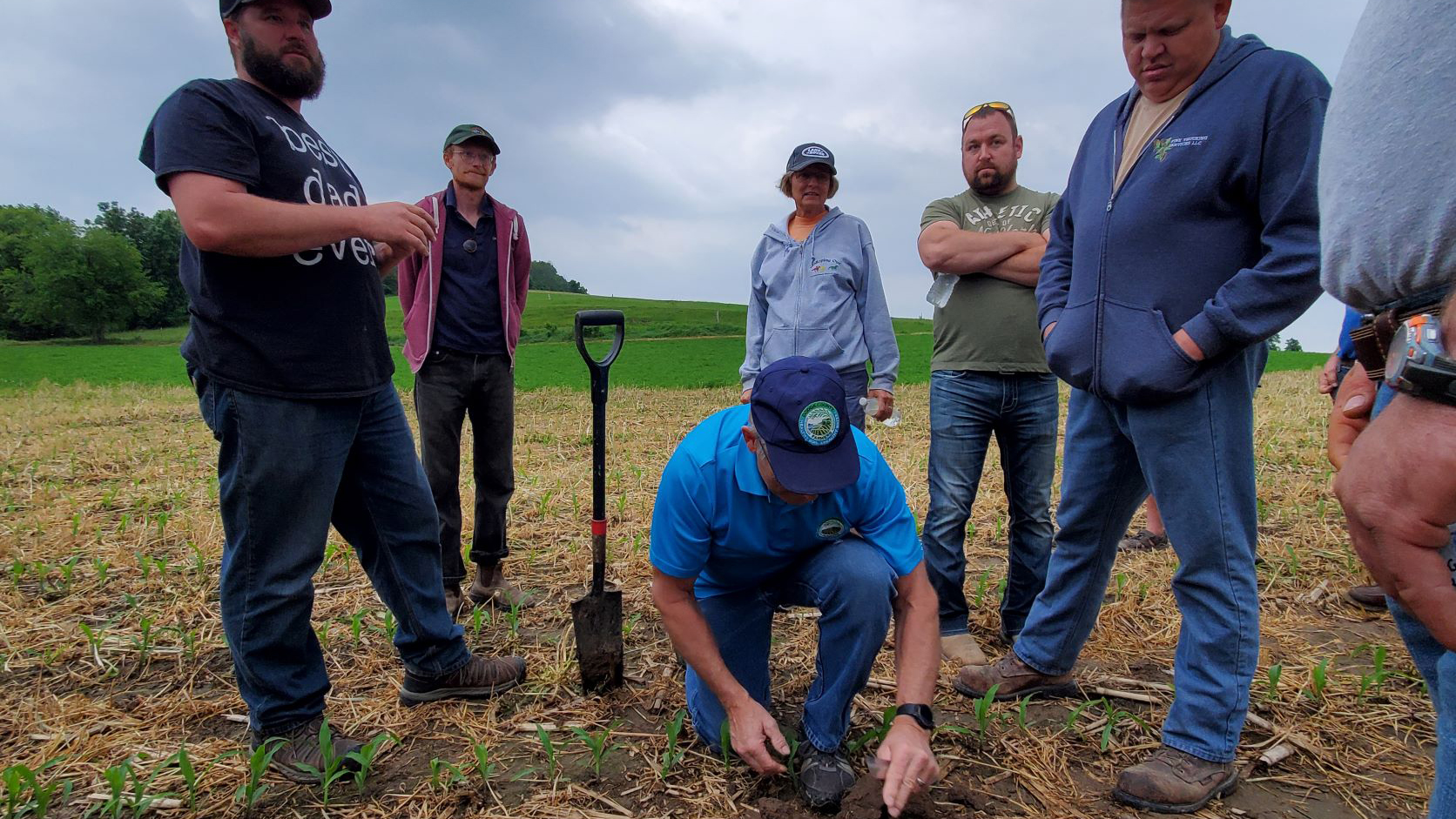
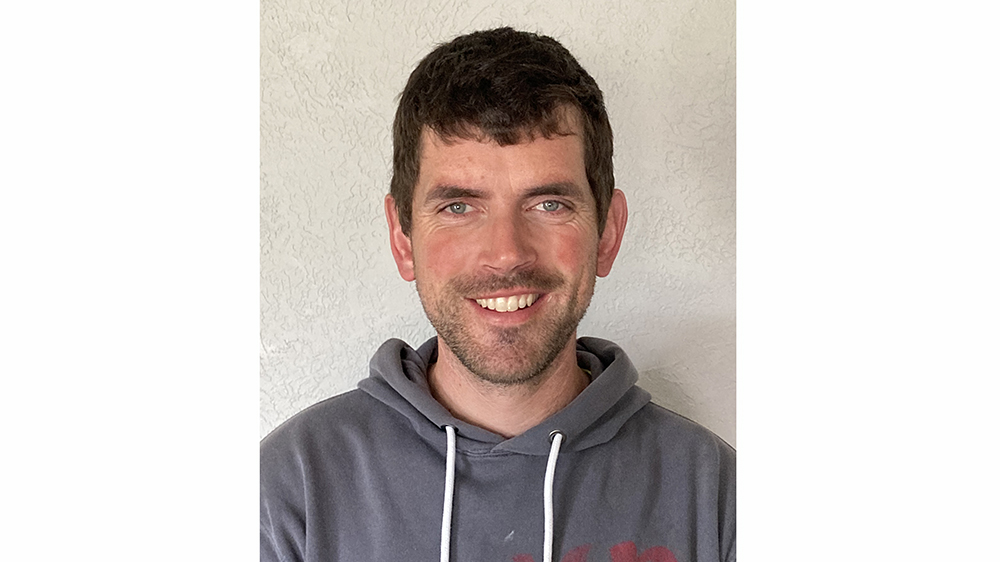
Conservation success stories boost farmers’ confidence
Collaboration means less trial and error for Calumet County group
The journey toward implementing conservation practices can intimidate farmers, especially those with no prior experience. However, networking with other farmers and sharing experiences has given Mitchell Schaefer the confidence to try them on his own farm.
Schaefer farms in Calumet County on 400 acres and has 270 cows. He has 60 acres of rotational grazing with 250 heifers on site. The land he farms is silty loam and rocky soil, which is a big reason he is finding ways to protect his soil health and water quality.
Schaefer started noticing more covered fields on neighboring farms in the winter and read articles about the benefits. When his friend Kurt Schneider asked him to join Calumet County Ag Stewardship Alliance (CCASA), a farmer-led conservation group, it was a no-brainer for Schaefer.
“Having a group to talk to about practices first is extremely helpful,” Schaefer said. “The less trial and error on my own means I can have more success and faster adoption.”
Three years ago, Schaefer began exploring minimal tillage, no tillage and the use of cover crops. He started out small with just a few smaller fields to make sure the practices would work on his land, and now has a goal to have 100% of his acres in cover crops.
CCASA continues to grow membership, now with 10 farmer-members. The three-year-old group represents 15,600 acres and 12,491 livestock, including beef, dairy and hogs. The alliance collaborates with university researchers, environmental groups and community leaders.
In 2021, members planted 6,030 acres using reduced tillage, planted 5,736 acres in cover crops, used low-disturbance manure injection on 5,438 acres and used no-tillage planting on 4,666 acres.
The practices adopted by CCASA farmers are significantly reducing the chance of harmful runoff into streams and lakes, according to a modeling-based analysis. The farmers in 2021 potentially prevented an estimated 3,506 pounds of phosphorus from leaving the fields and reduced 1,559 tons of sediment erosion along with reducing carbon dioxide equivalents by 1,572 tons, according to an analysis shared by the Wisconsin Department of Agriculture, Trade and Consumer Protection; the University of Wisconsin-Madison; and The Nature Conservancy (TNC).
For comparison, a mid-size dump truck can carry 10 tons of sediment, and 1 pound of phosphorus in a lake or stream has the potential to cause the growth of up to 500 pounds of algae, which can degrade water quality. The amount of greenhouse gas emissions reduced equals 339 miles driven by a gas-powered passenger vehicle.
The modeling-based analysis calculated an estimate of the potential impact of cover crops, low-disturbance manure application and reduced tillage compared to more conventional methods typical to the group’s area.
Schaefer uses primarily winter wheat, rye and alfalfa on his operation through the off-season.
His biggest challenge is implementing manure into the cover crop cycle and finding a way to uniformly apply manure throughout the year. Also, left-over crop residue from no-tillage was a concern.
“While no-till planting this spring, I noticed great root mass clumps and quite a bit of trash from the growth in the field’s last crop,” Schaefer said. “I had to figure out whether to work up the land. I knew from the group and articles I’ve read to just plant into it, letting the residue do its job to help the soil.”
TNC, a key supporter of CCASA, helped complete the analysis, which is based on surveys from the farms.
“The farmers in the Calumet farmer-led group are working to accelerate the widespread use of sustainable agriculture practices like cover crops and no-till planting,” Steve Richter, TNC’s director of agriculture strategies in Wisconsin, said. “These farmers are not only growing robust crops, but they are also demonstrating farm practices that can improve water quality and withstand the impacts of a changing climate.”
Schaefer is happy to see more people willing to share and teach others about these practices and the benefits they provide. He understands that his farm needs to be sustainable to stay in business and produce a safe and healthy product that customers want to purchase.
“It’s a good move on your farm ― there really is no down-side. It’s going to benefit the environment and keep us in business,” Schaefer said.
BY THE NUMBERS
Number of acres covered by conservation practices among Calumet County Ag Stewardship Alliance members:
- 2020 ― 26,295
- 2021 ― 62,276
*Multiple conservation practices can be used on a farm field
Potential impact of conservation practices in 2021:
- Phosphorus runoff reduction ― 3,506 pounds
- Sediment erosion reduction ― 1,559 tons
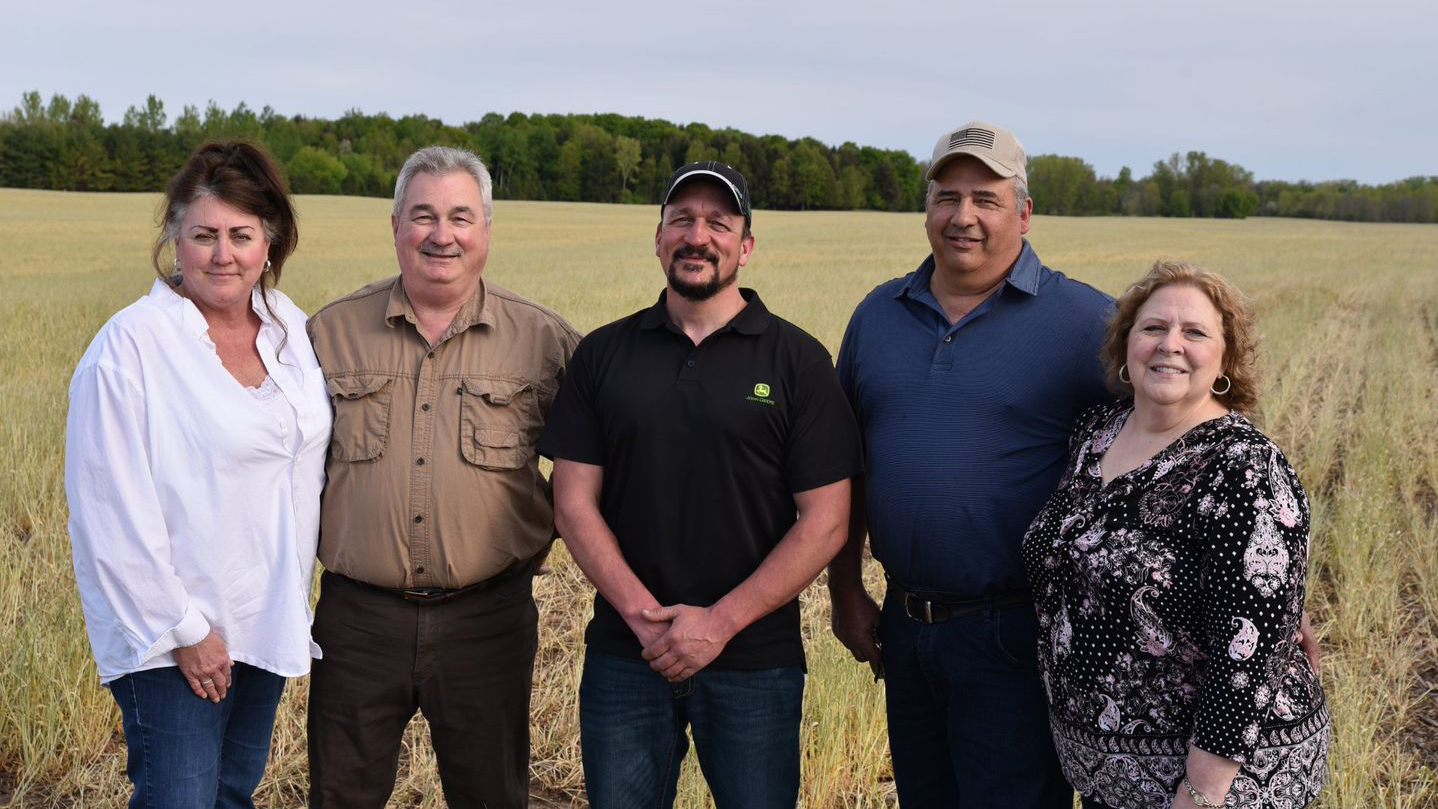
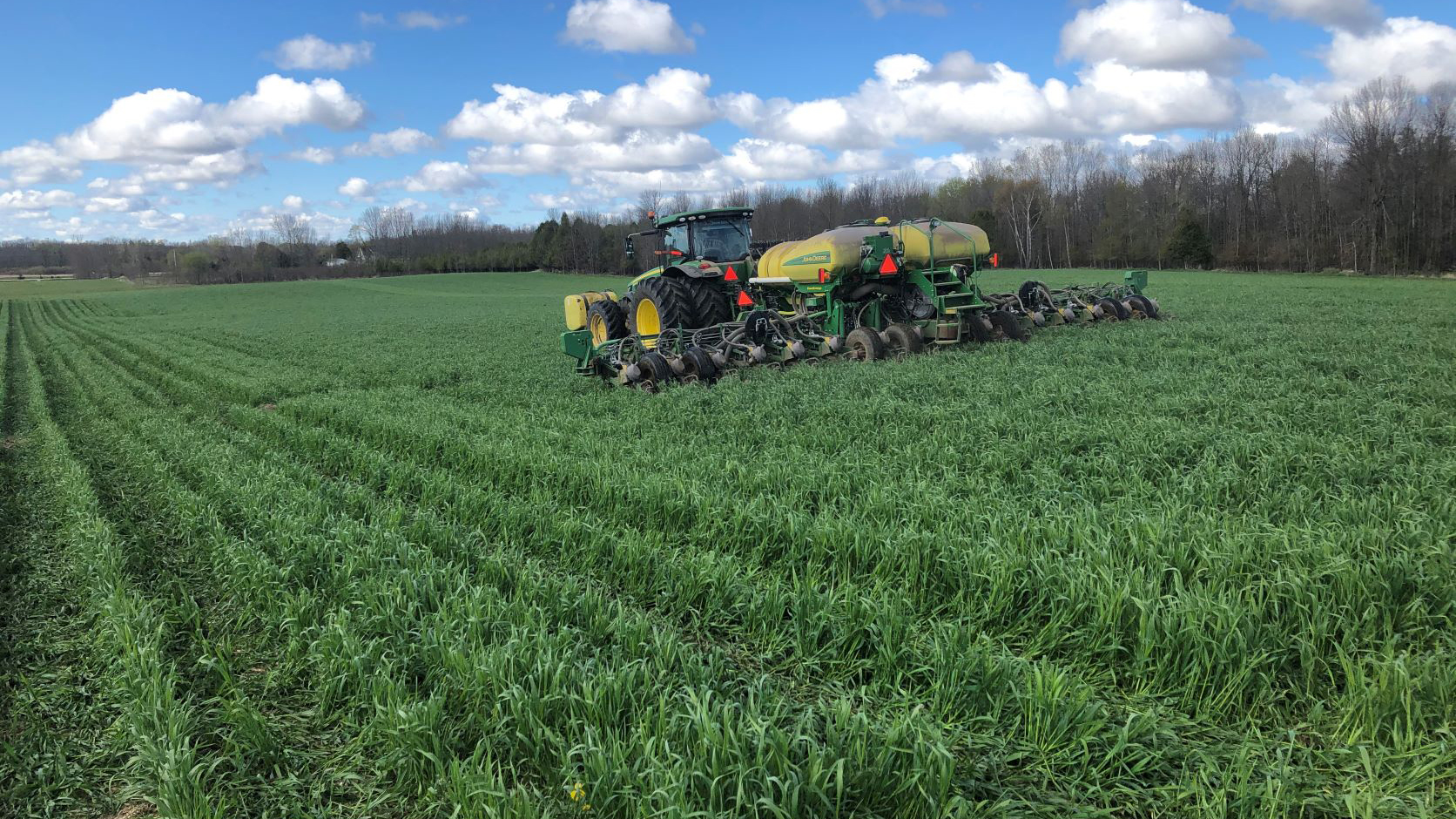
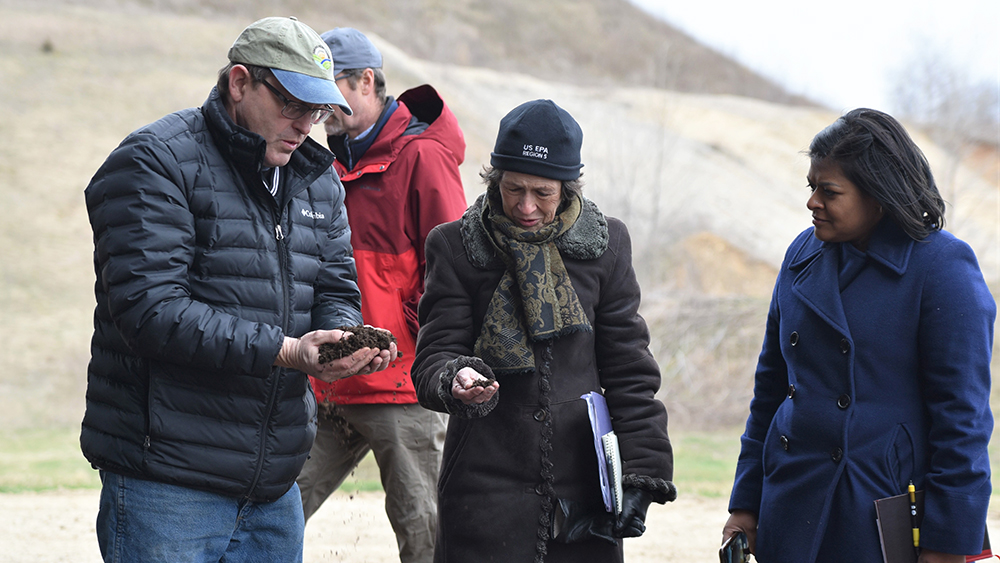
Wisconsin farmer shows EPA leaders innovative conservation work
Farmers for Sustainable Food (FSF) board member Jeff Endres, co-owner of Endres Berryridge Farm and president of local farmer-led conservation group Yahara Pride Farms, hosted a farm tour April 20 for U.S. Environmental Protection Agency Region 5 Administrator Debra Shore and her agriculture policy adviser, Sharmin Syed.
Through connections with the Dairy Business Association (DBA), Edge Dairy Farmer Cooperative and FSF, EPA leaders had the opportunity to see firsthand some of the innovative, voluntary conservation practices Endres is using on his farm, including composting manure, planting cover crops and reducing tillage. DBA also invited other key partners and farmers in Wisconsin’s growing conservation effort ― Lafayette Ag Stewardship Alliance, The Nature Conservancy in Wisconsin, Wisconsin Department of Natural Resources, Sand County Foundation, Yahara WINS and Wisconsin Farm Bureau Federation.
Shore was pleased with the tour around Endres’ manure compost barn and cover crop fields where she learned more about how farmers are sequestering nutrients to keep them out of surface and ground water, improving yields and using less commercial fertilizer. Endres talked about how these voluntary measures can improve soil health while also keeping input costs down. Yahara Pride has grown about 10 percent each year since it was created, as farmers continue to be convinced to participate based on the program’s successes.
Shore found it remarkable how much farmers are learning, doing and sharing with each other.
“It’s absolutely vital for the EPA to have relationships with farmers; we are all about clean water, clean air and soil that’s healthy,” Shore said. “We can’t have a healthy environment without healthy soil and a healthy economy and that’s all about working with farmers who know all about clean water and soil.”
When it comes to government agencies, USDA is often the usual contact point for farmers, but EPA plays a role in CAFO regulations and water quality. The regulations the agency puts forward are usually carried out by state agencies, so farmers don’t have a lot of interaction with EPA.
“Having EPA representatives from the Great Lakes region reach out to us trying to learn more about what we are doing in agriculture is very encouraging,” said Mykel Wedig, associate director of government affairs for DBA and Edge. “They saw the clear benefits of farmers working together in farmer-led conservation groups and began talking about how their agency can work with USDA to encourage and fund these types of voluntary efforts.”
